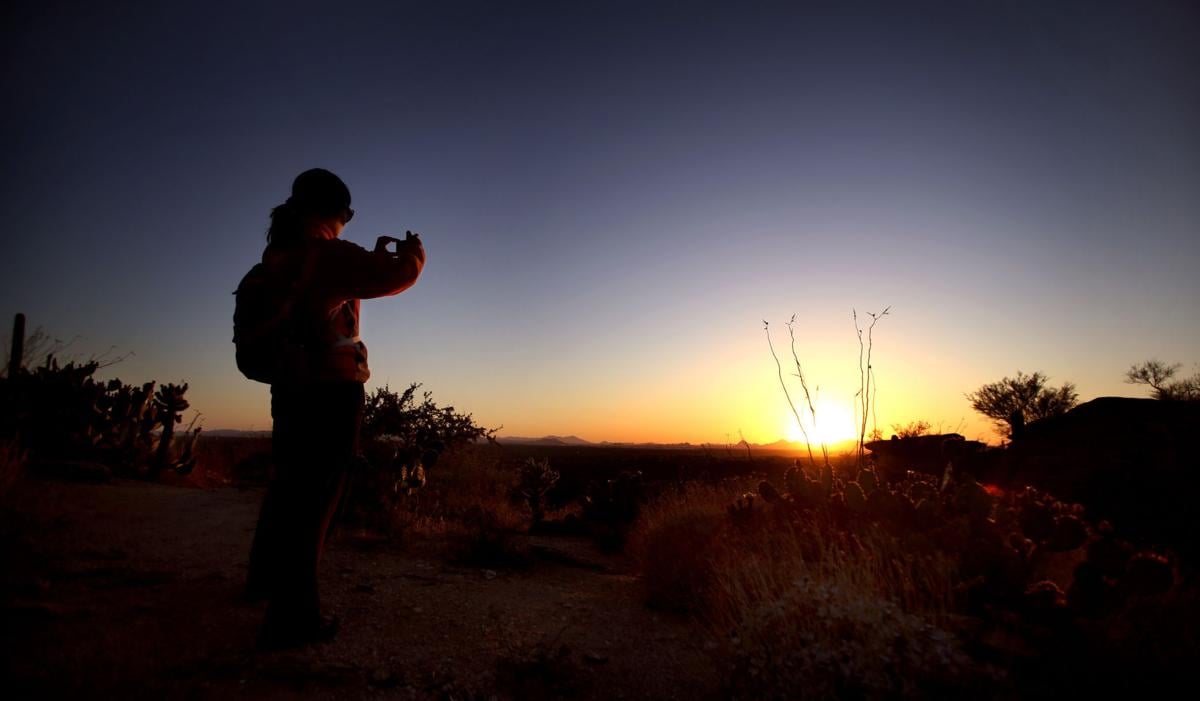The dark days are gone — or going, rather.
At 3:44 a.m. (Tucson time) Wednesday, the Earth in its orbit begins to move toward the summertime position for the Northern Hemisphere, and the daily hours of sunlight increase.
It’s the winter solstice — the return of the light and a time for celebration among most civilizations over the millennia. It’s a gradual process. We pick up less than a second on Wednesday, but by month’s end, Tucson will see an additional 2½ minutes of sun.
Tuesday and Wednesday had nearly the same amount of daylight — 10 hours, 2 minutes and 15 seconds — though Wednesday’s day was a fraction of a second longer.
By the time summer solstice arrives June 20, Tucson will receive 14 hours, 15 minutes and 53 seconds of sun (and we won’t be at all happy about it).
It’s not distance from the sun that causes the seasons, said Claire Raftery, head of education and public outreach for the National Solar Observatory in Boulder, Colorado.
“It’s direct vs. indirect sunlight,” she said. “The Earth is tilted because the axis of Earth’s rotation is not directly north/south. It’s at 23.4 degrees.”
At this point during Earth’s orbit, the Northern Hemisphere is tilted away from the sun, the South Pole receives 24 hours of sunlight and it’s summer in South America.
Halfway through Earth’s annual orbit in June, the opposite occurs: summer comes to Tucson, and Alaska lays claim to being the “land of the midnight sun.”
From now till then, we’ll pick up daylight hours.
On Wednesday, the sun rises at 7:21 a.m. and sets at 5:23 p.m.
By March 20, the spring equinox, it will rise at 6:27 a.m. and set at 6:36 p.m.
On the longest day, June 20, it will rise at 5:18 a.m. and set at 7:34 p.m. in Tucson.
All times are taken from timeanddate.com, which provides tables by geographic location for each day of the year.





